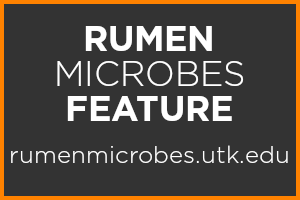
The microbiome is the community of microorganisms (such as fungi, bacteria, and viruses) that exist in a particular environment. The rumen microbiome enables ruminant animals to utilize plant-derived feed sources by processing them through microbial-driven fermentation. Rumen microbes play an essential role in the initial development of the rumen, immunity, and nutritional functions of the host. The composition of the rumen microbiome can be impacted by diet, environment, health, genetics, and age of the animal and can change in response to changes outside of the rumen.
The featured microbes for this summer are anaerobic fungi! On this occasion, we will learn their general characteristics and functions to better understand their importance for rumen activity and the animal.
Click the image hotspots to learn more about the rumen microbiome.
(Photo Courtesy of the University of Tennessee Institute of Agriculture )
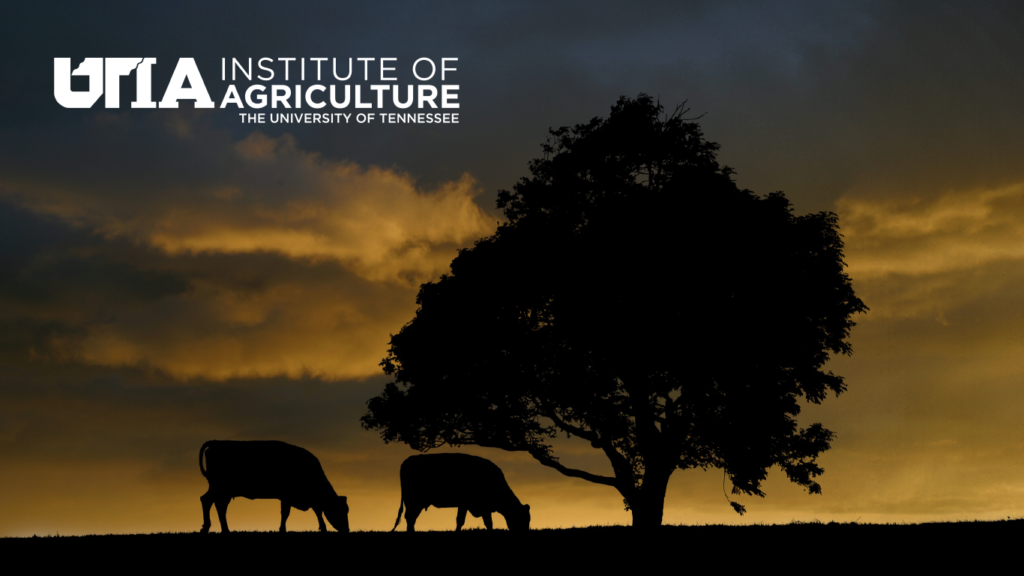
Learn More
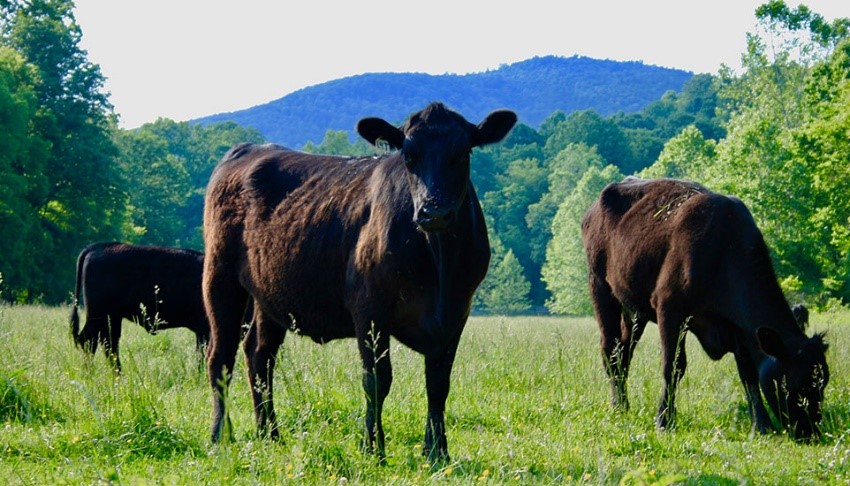
The population of anaerobic fungi in the rumen is directly related to fiber content. Image courtesy of UTBeef.com.
Learn More
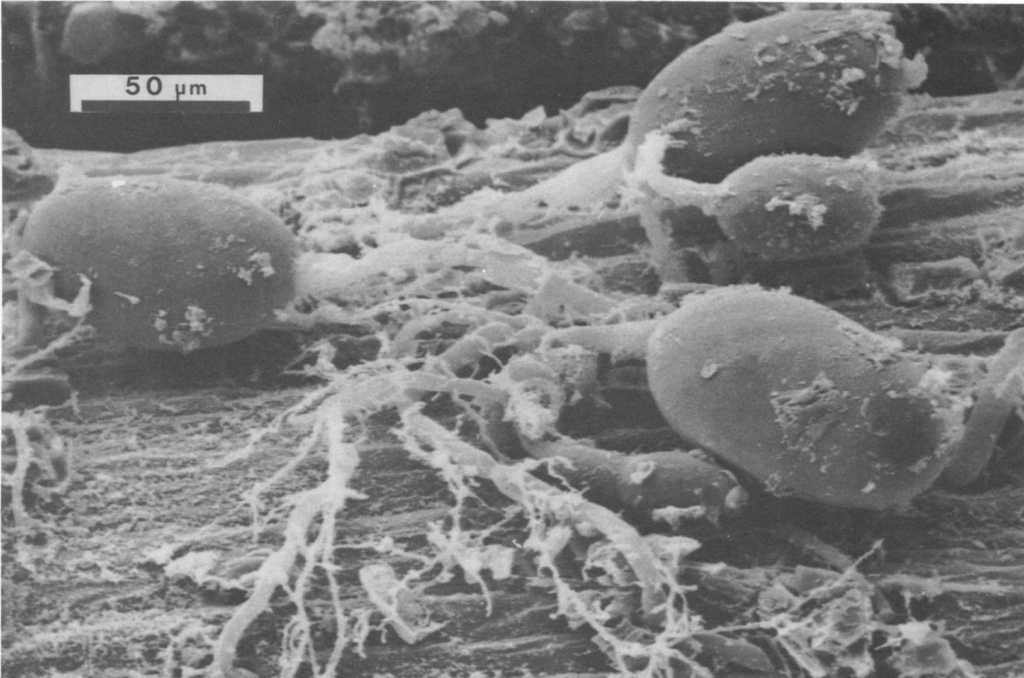
The fungal action on the cell wall and its contribution to its ruminal degradation seem to be closely related to its active colonization. Image courtesy of Bauchop, 1979.
Learn More
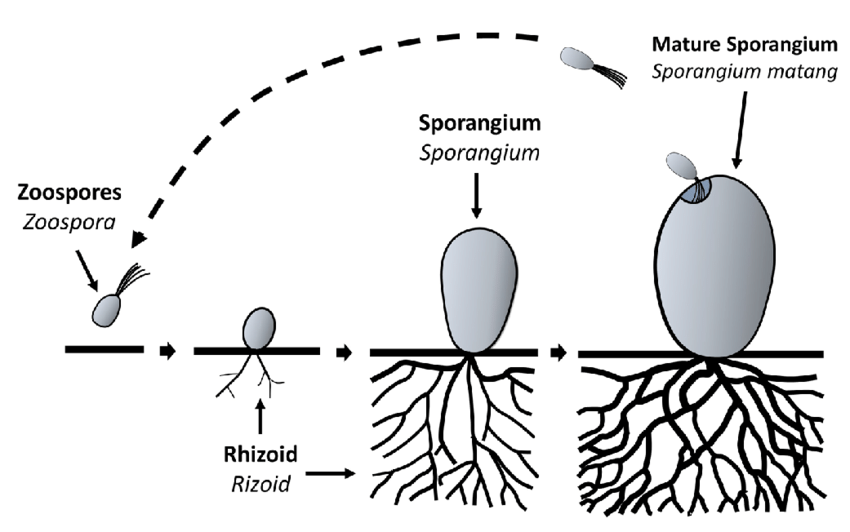
Counting the number of anaerobic rumen fungi is challenging, mainly due to their different life stages and their growth within plant fragments. Image courtesy of Agustina et al. 2020.
Follow this link to view all of the interactive presentations for the Rumen Microbes series.